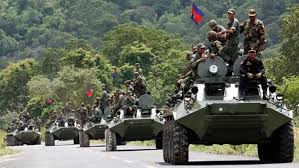The Thailand-Cambodia border dispute, particularly over the Preah Vihear Temple, is a longstanding issue that has sparked tensions, military clashes, and diplomatic challenges between the two Southeast Asian nations. This blog dives into the history, significance, and recent developments of the conflict, including the 2025 escalations, to provide a comprehensive understanding of this complex issue. If you’re searching for insights into the Thailand-Cambodia war, the Preah Vihear Temple, or the broader border dispute, read on to learn more.

What is the Preah Vihear Temple?
The Preah Vihear Temple, also known as Prasat Preah Vihear, is an 11th-century Hindu temple dedicated to Lord Shiva, located in the Dângrêk Mountains along the Thailand-Cambodia border. Built during the Khmer Empire’s golden age, the temple is a UNESCO World Heritage Site, celebrated for its stunning architecture and cultural significance. Unlike most Khmer temples, it is oriented along a north-south axis, perched atop a cliff, offering breathtaking views of the Cambodian plains. Its historical and spiritual importance makes it a symbol of national pride for both Cambodia and Thailand, fueling the ongoing dispute over its ownership.
Historical Roots of the Thailand-Cambodia Border Dispute
The conflict over the Preah Vihear Temple traces back to colonial-era agreements between Siam (modern-day Thailand) and French Indochina (which included Cambodia). In 1904, a Franco-Siamese treaty stipulated that the border would follow the natural watershed line of the Dângrêk Mountains, placing most of the temple on Thai territory. However, a 1907 map drawn by French surveyors deviated from this line, placing Preah Vihear within Cambodian territory. Thailand accepted this map at the time but later contested it, arguing it was not officially sanctioned.
The dispute escalated in the mid-20th century:
- 1941: Thailand, allied with Japan, seized Preah Vihear during World War II.
- 1953: After France withdrew from Cambodia, Thai troops occupied the temple, prompting Cambodia to take the case to the International Court of Justice (ICJ).
- 1962: The ICJ ruled 9-3 in favor of Cambodia, stating that Thailand had accepted the 1907 map and thus the temple was Cambodian territory. Thailand was ordered to withdraw its forces and return artifacts taken from the site.
- 2013: The ICJ reaffirmed Cambodia’s sovereignty over the temple’s promontory but did not rule on the surrounding 4.6 square kilometers, leaving room for ongoing disputes.
Despite these rulings, the ambiguity over the surrounding land has kept tensions alive, often exacerbated by nationalist sentiments and domestic politics in both countries.
The 2008–2013 Cambodian-Thai Border Crisis
Tensions flared significantly in 2008 when Cambodia successfully applied for UNESCO World Heritage status for Preah Vihear, prompting protests in Thailand. The Thai government initially supported the application but faced backlash from nationalist groups, such as the Yellow Shirts, who claimed it jeopardized Thailand’s claim to the disputed 4.6 square kilometers around the temple. This led to a series of military clashes from 2008 to 2011, with notable incidents including:
- July 2008: Thai troops moved into the Keo Sikhakirisvara Pagoda, 300 meters from the temple, escalating tensions. Cambodia closed border access, and both sides stationed hundreds of troops in the area.
- February 2011: Heavy fighting, including artillery barrages, killed at least eight people and damaged the temple. Thousands were displaced, and the UN Security Council called for restraint.
- April 2011: Clashes extended to the Ta Moan and Ta Krabey temple complexes, with several deaths reported.
- December 2011: Both sides agreed to withdraw troops, but the underlying dispute remained unresolved.
These clashes, driven by nationalist fervor and political instability, particularly in Thailand, highlighted the temple’s role as a flashpoint.
Recent Developments in 2025
In 2025, the Thailand-Cambodia border dispute has seen renewed escalations, raising concerns about a potential “Thailand-Cambodia war.” Key events include:
- February 2025: Cambodian troops and their families entered the disputed Ta Moan Thom temple, singing the national anthem, which sparked a confrontation with Thai forces.
- May 28, 2025: A deadly clash near Morokot village in Cambodia’s Preah Vihear province left one Cambodian soldier dead. Cambodia claimed Thai forces fired on their patrol, while Thailand alleged Cambodian troops entered disputed territory and initiated the conflict.
- June 2025: Cambodia announced plans to take the dispute over several border areas, including Ta Moan Thom, Ta Moan Toch, and Ta Krabey, to the ICJ. Thai Prime Minister Paetongtarn Shinawatra faced domestic criticism for discussing the issue with Cambodian Senate President Hun Sen, leading to her suspension pending an ethics investigation.
- July 24, 2025: Reports of Thai airstrikes and heavy artillery fire near the Prasat Ta Muen Thom temple surfaced, though these claims remain unverified. Thailand expelled Cambodia’s ambassador, and both sides engaged in heavy rhetoric, with Thai military statements indicating readiness for a “high-level operation” to defend sovereignty.
These developments have heightened fears of further violence, with posts on X reflecting public concern over the potential for a broader conflict. However, both nations have called for calm and continued bilateral talks through the Joint Boundary Commission (JBC), established in 2000, though progress remains slow.
Why Does the Preah Vihear Temple Matter?
The Preah Vihear Temple is more than a historical site; it is a symbol of national identity for both Cambodia and Thailand. For Cambodians, it represents the legacy of the Khmer Empire, which also built Angkor Wat. For Thais, its proximity and shared cultural heritage evoke a sense of historical entitlement. The temple’s location in the Dângrêk Mountains, where the border is poorly defined, complicates matters, as does the 4.6 square kilometers of disputed land around it, which both nations claim.
Nationalist movements, particularly Thailand’s Yellow Shirts, have used the dispute to rally domestic support, often portraying concessions as a betrayal of sovereignty. In Cambodia, the temple’s UNESCO listing in 2008 was a source of national pride but also a trigger for renewed conflict. The interplay of historical grievances, colonial-era mapping errors, and modern political dynamics keeps the dispute alive.
Current Sentiment and International Response
Posts on X in July 2025 highlight the intensity of public sentiment, with users describing the conflict as a clash over a “900-year-old Lord Shiva temple” and expressing shock at the escalation. Some posts claim Thailand launched airstrikes, though these reports lack confirmation from reliable sources and should be treated as inconclusive.
The international community, including the UN and ASEAN, has urged de-escalation. In 2011, ASEAN mediation efforts led by Indonesia helped reduce tensions, and the ICJ’s 2013 ruling clarified Cambodia’s sovereignty over the temple’s promontory. However, Thailand’s preference for bilateral talks over ICJ jurisdiction and Cambodia’s push for international adjudication suggest a resolution remains elusive.
What’s Next for Thailand and Cambodia?
The Thailand-Cambodia border dispute, centered on the Preah Vihear Temple, remains a volatile issue with no easy solution. Cambodia’s plan to seek ICJ rulings on additional disputed areas, including Ta Moan Thom, could further strain relations, especially given Thailand’s sensitivity to the 1962 ruling. Bilateral efforts through the JBC continue, but domestic politics and nationalist sentiments on both sides hinder progress.
To avoid further violence, both nations could benefit from:
- Strengthening Diplomacy: Enhancing the JBC’s role in demarcating the border with clear, mutually agreed maps.
- Cultural Cooperation: Promoting the temple as a shared heritage site to foster tourism and goodwill, as initially envisioned during the UNESCO application.
- International Mediation: Engaging ASEAN or the UN to facilitate dialogue and prevent escalations.
Conclusion
The Thailand-Cambodia border dispute over the Preah Vihear Temple is a complex interplay of history, nationalism, and geopolitics. From colonial-era mapping errors to modern military clashes, the conflict underscores the challenges of resolving territorial disputes in a region rich with cultural heritage. As tensions persist in 2025, the international community watches closely, hoping for a peaceful resolution to a centuries-old rivalry. For the latest updates on the Thailand-Cambodia conflict, stay tuned to reliable news sources and follow ongoing diplomatic efforts.
Thailand-Cambodia border dispute, Preah Vihear Temple, Thailand-Cambodia war, Cambodia, Thailand, border conflict, UNESCO World Heritage, International Court of Justice, Dângrêk Mountains, Khmer Empire, nationalist sentiments
